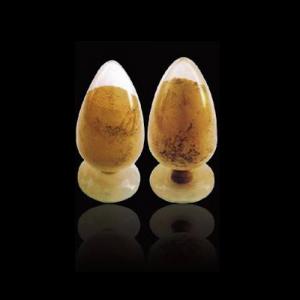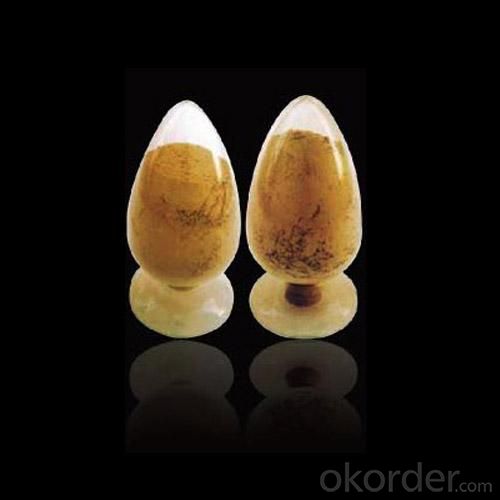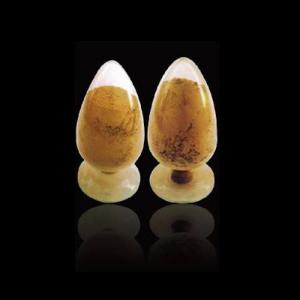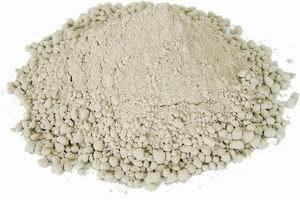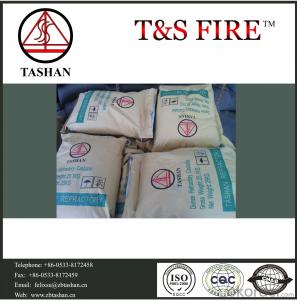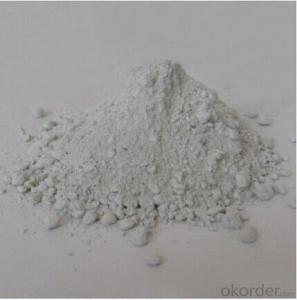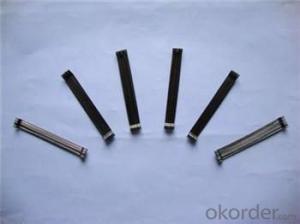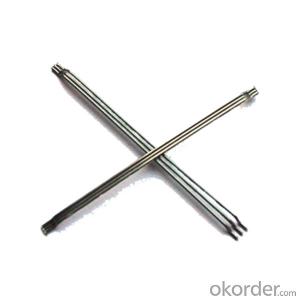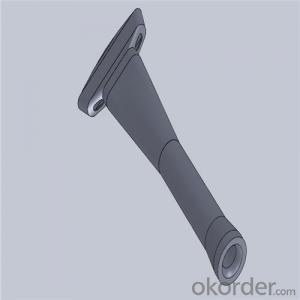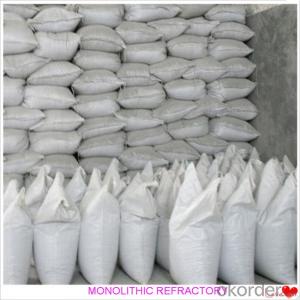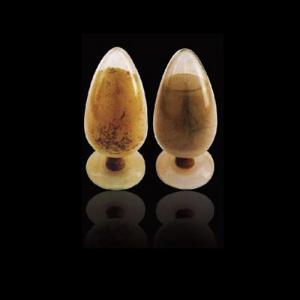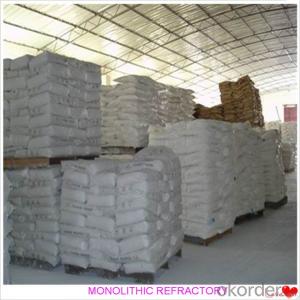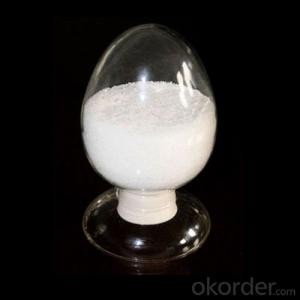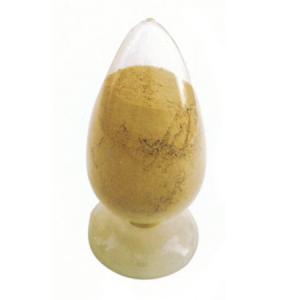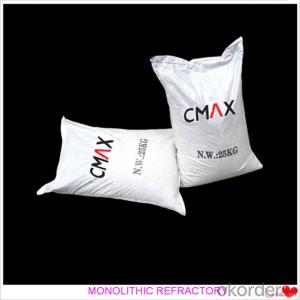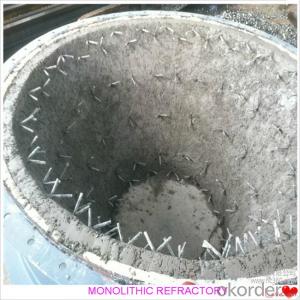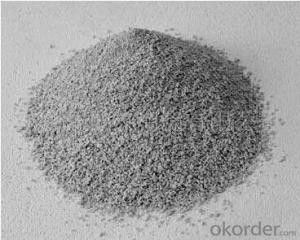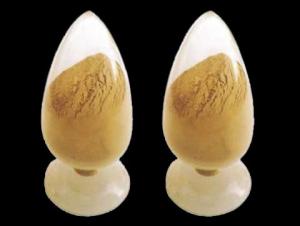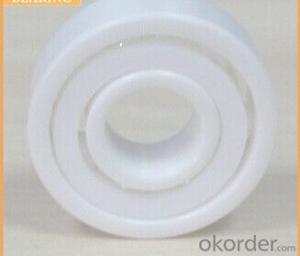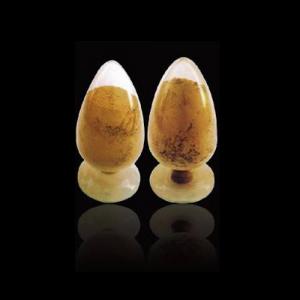Monolithic Refractories for Iron and Steel Industry - Alumina Magnesium Castable for Ladle and Tundish
- Loading Port:
- China Main Port
- Payment Terms:
- TT or L/C
- Min Order Qty:
- 2 m.t.
- Supply Capability:
- 5000 Tons Per Month m.t./month
OKorder Service Pledge
OKorder Financial Service
You Might Also Like
General Information of Alumina Magnesium Castable for Ladle and Tundish
Made as per international standards, FIREF alumina magnesium castable for ladle and tundish has been widely accpeted by the customers for its excellent corrosion resistance, long operating life and high refractoriness. Further, they can be provided in different specifications as required.
Technical data of Alumina Magnesium Castable for Ladle and Tundish
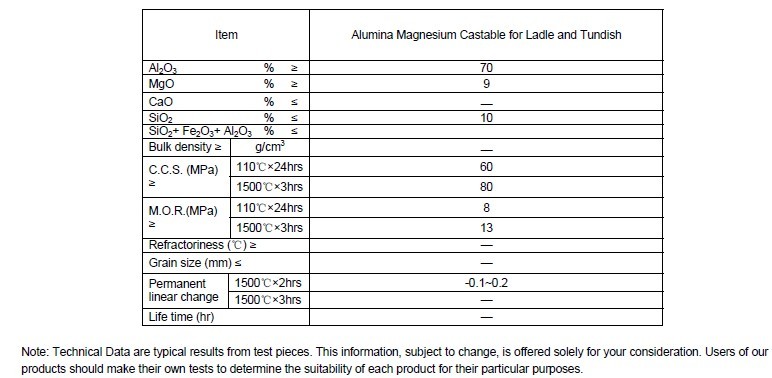
Production line and packing of Alumina Magnesium Castable for Ladle and Tundish
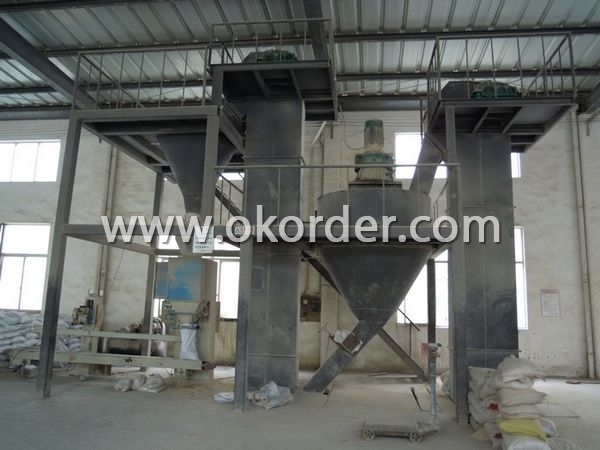
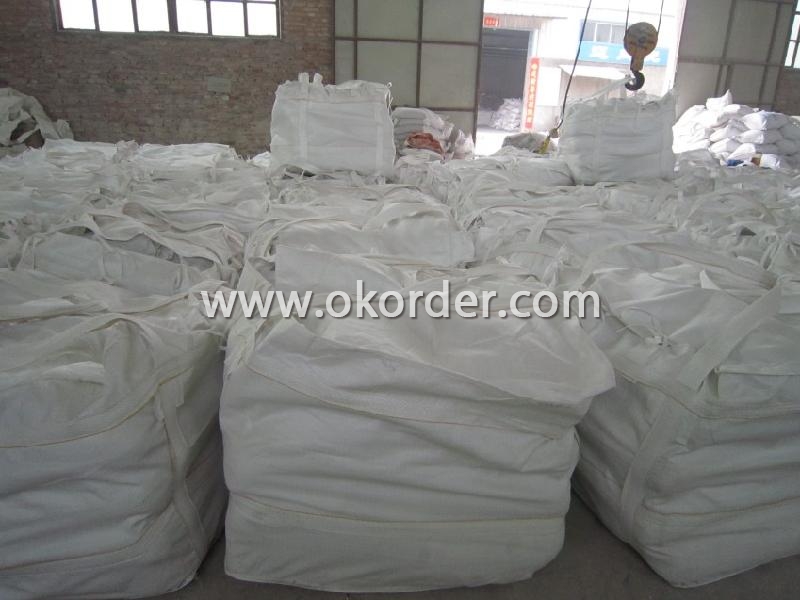
Feature of Alumina Magnesium Castable for Ladle and Tundish
Excellent corrosion resistance
Long operating life
High refractoriness
Application of Alumina Magnesium Castable for Ladle and Tundish
FIREF alumina magnesium castable for ladle and tundish can be used widely in Ladle and Tundish of iron and steel industry.
Production Flow of Alumina Magnesium Castable for Ladle and Tundish
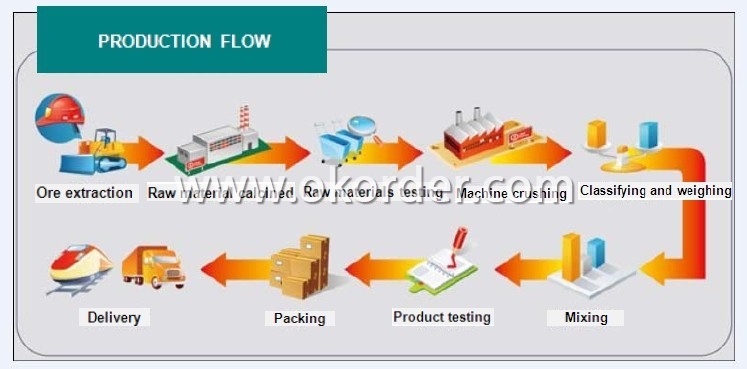
- Q: How do monolithic refractories perform in aluminum holding furnace applications?
- Monolithic refractories perform exceptionally well in aluminum holding furnace applications due to their high thermal conductivity, excellent resistance to thermal shock, and superior mechanical strength. They can withstand the extreme temperatures and harsh chemical environments found in these furnaces, ensuring long-lasting and efficient operations. Additionally, monolithic refractories offer easy installation and maintenance, making them a preferred choice in aluminum holding furnace applications.
- Q: What are the recommended drying procedures for monolithic refractories?
- The recommended drying procedures for monolithic refractories typically involve a gradual and controlled process to ensure the refractory material is properly cured and hardened. This typically includes a pre-drying phase where the refractory is heated slowly to remove any residual moisture. After pre-drying, a gradual increase in temperature is applied to further remove moisture and allow for proper chemical reactions to occur within the refractory. It is important to closely follow manufacturer guidelines and consider factors such as refractory thickness, ambient humidity, and available drying equipment to determine the specific drying procedures for each application.
- Q: How do monolithic refractories withstand the mechanical impacts in furnace door applications?
- Monolithic refractories withstand mechanical impacts in furnace door applications due to their high strength and resistance to thermal shock. These refractories are composed of dense and uniform materials, such as castables or plastics, which provide excellent structural integrity and the ability to withstand heavy loads and vibrations. Additionally, they have low porosity and high thermal conductivity, allowing them to dissipate heat efficiently and reduce the risk of cracking or spalling under mechanical stress.
- Q: What are the factors affecting the thermal conductivity of monolithic refractories?
- There are several factors that can affect the thermal conductivity of monolithic refractories. 1. Composition: The chemical composition of the refractory material plays a significant role in determining its thermal conductivity. Different types of refractories have different thermal conductivities based on the types and amounts of raw materials used. For example, refractories with a higher content of insulating materials, such as alumina or silica, tend to have lower thermal conductivities. 2. Porosity: The porosity of the refractory material also affects its thermal conductivity. Higher porosity means there are more air or gas-filled voids within the material, which can act as thermal insulators. Therefore, refractories with higher porosity tend to have lower thermal conductivities. 3. Density: The density of the refractory material is another important factor. Higher density materials usually have higher thermal conductivities, as the particles are packed more closely together, allowing for better heat transfer. 4. Grain size: The size of the grains in the refractory material can impact thermal conductivity. Smaller grain sizes result in higher contact points between particles, facilitating better heat transfer. Therefore, refractories with smaller grain sizes typically have higher thermal conductivities. 5. Temperature: The temperature at which the refractory material operates can also affect its thermal conductivity. Some materials may exhibit changes in thermal conductivity at different temperature ranges. For instance, certain refractories may have lower thermal conductivities at low temperatures but higher conductivities at high temperatures due to changes in their crystal structure. 6. Moisture content: The presence of moisture or water in the refractory material can significantly decrease its thermal conductivity. Water has a relatively low thermal conductivity, so even a small amount of moisture can act as an insulating barrier within the material. 7. Microstructure: The microstructure of the refractory material, including the arrangement and orientation of its grains, can affect thermal conductivity. A well-aligned microstructure with good interconnectivity between the grains can enhance heat transfer, resulting in higher thermal conductivity. Overall, the thermal conductivity of monolithic refractories is influenced by a combination of factors, including composition, porosity, density, grain size, temperature, moisture content, and microstructure. Understanding and controlling these factors is crucial for optimizing the thermal performance of monolithic refractories in various high-temperature applications.
- Q: How are monolithic refractories different from conventional refractories?
- Monolithic refractories differ from conventional refractories in several ways. Firstly, conventional refractories are typically made from pre-formed shapes such as bricks or tiles, while monolithic refractories are unshaped and can be installed by casting, gunning, or ramming. This allows for greater flexibility in design and installation, as monolithic refractories can be shaped to fit any complex geometry or size requirement. Secondly, monolithic refractories have a higher degree of thermal shock resistance compared to conventional refractories. This means that they can withstand rapid changes in temperature without cracking or spalling. This property is particularly important in applications where the refractory is exposed to extreme temperature variations, such as in furnaces or kilns. Furthermore, monolithic refractories have superior corrosion resistance, which makes them more suitable for environments with acidic or alkaline conditions. They are also known for their excellent mechanical strength and abrasion resistance, making them ideal for applications where the refractory is subjected to high mechanical stresses or wear. Lastly, monolithic refractories offer better energy efficiency due to their lower thermal conductivity. This means that they can retain heat more effectively, resulting in reduced energy consumption and cost savings. Overall, the main differences between monolithic refractories and conventional refractories lie in their installation methods, thermal shock resistance, corrosion resistance, mechanical strength, and energy efficiency. These factors make monolithic refractories a preferred choice in many industrial applications where flexibility, durability, and performance are crucial.
- Q: What are some common maintenance practices for monolithic refractories in iron and steel furnaces?
- Some common maintenance practices for monolithic refractories in iron and steel furnaces include: 1. Regular inspections: Conducting routine inspections is essential to identify any potential issues with the monolithic refractories. Inspections should be carried out by trained professionals who can assess the condition of the refractories and detect any signs of wear, erosion, or damage. 2. Repair and patching: Promptly repairing any damaged or eroded areas is crucial to prevent further deterioration and maintain the integrity of the refractories. Patching materials, such as refractory mortars or castable refractories, can be used to fill in gaps or repair small cracks. 3. Cleaning: Regularly cleaning the refractory lining helps to remove any build-up of slag, scale, or other impurities that can negatively impact the performance of the refractories. Cleaning can be done mechanically, using brushes or scrapers, or through chemical methods such as acid cleaning. 4. Thermal cycling: Controlled thermal cycling is often performed to condition and strengthen the monolithic refractories. This involves gradually increasing and decreasing the temperature of the furnace to improve the refractory's resistance to thermal shock. 5. Coating and sealing: Applying protective coatings or sealants to the refractory lining can help enhance its resistance to chemical attack, erosion, and thermal cycling. These coatings act as a barrier, preventing the penetration of molten metals or slags into the refractory material. 6. Monitoring and control: Continuous monitoring of operating conditions such as temperature, pressure, and atmosphere inside the furnace is important to prevent any sudden changes that may negatively affect the refractories. Maintaining proper control over these parameters helps to extend the life of the monolithic refractories. 7. Training and education: Providing regular training and education to furnace operators and maintenance personnel is crucial for them to understand the importance of proper refractory maintenance practices. This ensures that the refractories are handled and operated correctly, reducing the risk of premature failure. Overall, implementing these maintenance practices can significantly prolong the lifespan of monolithic refractories in iron and steel furnaces and maximize their performance, ultimately leading to improved efficiency and cost-effectiveness in the production process.
- Q: How do monolithic refractories contribute to the overall efficiency of ladle cleaning operations?
- Enhancing the overall efficiency of ladle cleaning operations is a crucial role played by monolithic refractories. Composed of a single, homogeneous structure, these refractory materials offer several key advantages that contribute to improved efficiency. To begin with, monolithic refractories possess exceptional thermal insulation properties. This means they can withstand high temperatures without cracking or deteriorating, thereby allowing for more efficient and effective ladle cleaning operations. By consistently maintaining a specific temperature, these refractories minimize heat loss and ensure uninterrupted and timely completion of the cleaning process. Furthermore, monolithic refractories exhibit high resistance to chemical attacks. In steelmaking processes, ladles often come into contact with aggressive molten metals and slag that can erode and corrode the refractory lining. However, monolithic refractories are designed specifically to endure these harsh conditions, providing a longer service life and reducing the need for frequent repairs or replacements. This not only saves time but also reduces the overall cost of ladle maintenance. In addition, monolithic refractories possess excellent flowability and workability. They can be easily shaped and installed in the ladle lining, enabling quick and precise application. This ease of installation results in shorter downtime during ladle cleaning operations, as the refractory lining can be swiftly repaired or replaced. Moreover, the flowability of monolithic refractories ensures better coverage and adherence to the ladle's surface, leaving no gaps or weak points. This enhances the overall effectiveness of the cleaning process and prevents potential contamination or reactivity issues. In conclusion, monolithic refractories significantly contribute to the overall efficiency of ladle cleaning operations by providing exceptional thermal insulation, high resistance to chemical attacks, and easy workability. These properties lead to reduced downtime, increased durability, and cost savings, making monolithic refractories a vital component in optimizing ladle cleaning processes.
- Q: Can monolithic refractories be customized for specific iron and steel processing requirements?
- Yes, monolithic refractories can be customized for specific iron and steel processing requirements. Monolithic refractories are known for their versatility and ability to be tailored to various applications. The composition, physical properties, and installation techniques of monolithic refractories can be adjusted to meet the specific needs of iron and steel processing. For example, the choice of raw materials used in the manufacturing of monolithic refractories can be customized to withstand the high temperatures and harsh chemical environments encountered in iron and steel processing. Different types of aggregates, binders, and additives can be selected to enhance the refractory's resistance to thermal shock, erosion, and corrosion. Furthermore, the installation method of monolithic refractories can be adapted to suit the specific requirements of iron and steel processing. Whether it is gunning, casting, ramming, or spraying, the installation technique can be customized to ensure optimal performance and longevity in the given application. Additionally, monolithic refractories can also be tailored to specific shapes and sizes to fit the various equipment and structures used in iron and steel processing. This allows for a more precise and efficient lining of furnaces, ladles, tundishes, and other vessels, thereby improving the overall productivity and performance of the process. In summary, monolithic refractories can be customized to meet the specific iron and steel processing requirements by adjusting their composition, physical properties, installation techniques, and shape. This customization ensures that the refractories can withstand the extreme conditions encountered in these industries, leading to improved performance, longer service life, and enhanced productivity.
- Q: How can the lifespan of monolithic refractories be extended in the iron and steel industry?
- The lifespan of monolithic refractories in the iron and steel industry can be extended through various measures. Firstly, proper installation and maintenance of the refractories is crucial. This includes ensuring that the refractories are correctly shaped and sized to fit the specific application, as well as using appropriate installation techniques and materials. Regular inspections should be conducted to identify any signs of wear or damage, and immediate repairs or replacements should be carried out to prevent further deterioration. Secondly, implementing effective heat management practices can significantly prolong the lifespan of monolithic refractories. This involves monitoring and controlling the temperature gradients within the refractory lining to prevent thermal shock and excessive thermal cycling. Adequate insulation and cooling systems should also be in place to maintain a stable and controlled environment. Furthermore, proper handling and operation of the equipment and processes can contribute to extending the refractory lifespan. Avoiding sudden temperature changes, minimizing mechanical stress and impact, and employing appropriate operating procedures can help reduce the wear and tear on the refractories. Additionally, utilizing advanced refractory materials and technologies can enhance the lifespan of monolithic refractories. The development and use of high-performance and specialized refractories, such as advanced ceramics or specialized coatings, can provide increased resistance to thermal and chemical degradation, ultimately extending their lifespan. Lastly, continuous research and development efforts should be undertaken to explore innovative solutions for refractory longevity in the iron and steel industry. Collaborating with suppliers, experts, and industry partners can help identify and implement new technologies and techniques that can improve the durability and performance of monolithic refractories. In summary, extending the lifespan of monolithic refractories in the iron and steel industry requires a combination of proper installation and maintenance, effective heat management, careful handling and operation, utilization of advanced materials, and ongoing research and development. By implementing these strategies, the iron and steel industry can optimize refractory performance and reduce downtime and costs associated with frequent replacements.
- Q: What are the typical applications of monolithic refractories in blast furnaces?
- Monolithic refractories are widely used in blast furnaces due to their unique properties and applications. These refractories are composed of a single, homogeneous material that can be shaped and installed in various forms without the need for joints or seams. This characteristic makes them ideal for lining and protecting the different zones of a blast furnace. One typical application of monolithic refractories in blast furnaces is the lining of the hearth. The hearth is the bottom part of the furnace where molten iron and slag accumulate. Monolithic refractories are used to create a durable and heat-resistant lining that can withstand the extreme temperatures and chemical reactions occurring in this area. Another common application is the lining of the bosh, which is the transition zone between the hearth and the stack of the blast furnace. The bosh is subjected to high temperatures and mechanical stresses due to the movement of the burden materials. Monolithic refractories with high thermal shock resistance and abrasion resistance are used to ensure the longevity and efficiency of the bosh. Monolithic refractories are also used for the lining of the stack and the tuyere area. The stack is the vertical part of the furnace where the reduction of iron ore takes place. The tuyere area is where the hot blast of air is injected into the furnace. Both of these areas require refractories that can withstand high temperatures, chemical reactions, and mechanical stresses. Furthermore, monolithic refractories are used for repairs and maintenance in blast furnaces. Due to the harsh conditions inside the furnace, the lining may deteriorate over time. Monolithic refractories can be easily applied as patching materials to restore the integrity of the lining and extend the furnace's lifespan. In summary, the typical applications of monolithic refractories in blast furnaces include lining the hearth, bosh, stack, and tuyere area, as well as for repairs and maintenance. These refractories provide excellent thermal shock resistance, abrasion resistance, and durability, making them essential for the efficient operation of blast furnaces in the iron and steel industry.
1. Manufacturer Overview
| Location | Henan, China |
| Year Established | 2007 |
| Annual Output Value | Above US$ 60 Million |
| Main Markets | Mid East; Eastern Europe; North America |
| Company Certifications | ISO 9001:2008 |
2. Manufacturer Certificates
| a) Certification Name | |
| Range | |
| Reference | |
| Validity Period |
3. Manufacturer Capability
| a) Trade Capacity | |
| Nearest Port | Tianjin |
| Export Percentage | 31% - 50% |
| No.of Employees in Trade Department | 21-50 People |
| Language Spoken: | English; Chinese |
| b) Factory Information | |
| Factory Size: | Above 36,000 square meters |
| No. of Production Lines | Above 5 |
| Contract Manufacturing | OEM Service Offered |
| Product Price Range | Average |
Send your message to us
Monolithic Refractories for Iron and Steel Industry - Alumina Magnesium Castable for Ladle and Tundish
- Loading Port:
- China Main Port
- Payment Terms:
- TT or L/C
- Min Order Qty:
- 2 m.t.
- Supply Capability:
- 5000 Tons Per Month m.t./month
OKorder Service Pledge
OKorder Financial Service
Similar products
Hot products
Hot Searches
Related keywords
